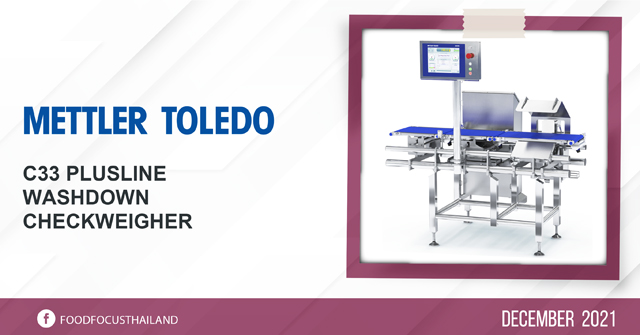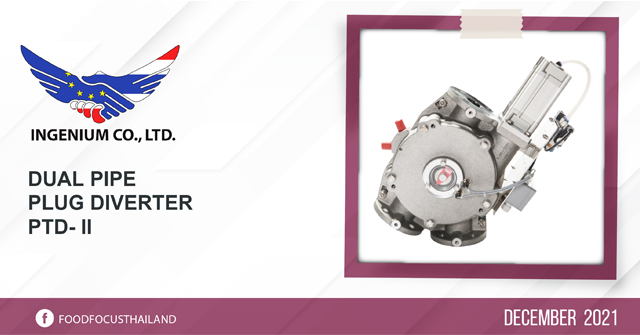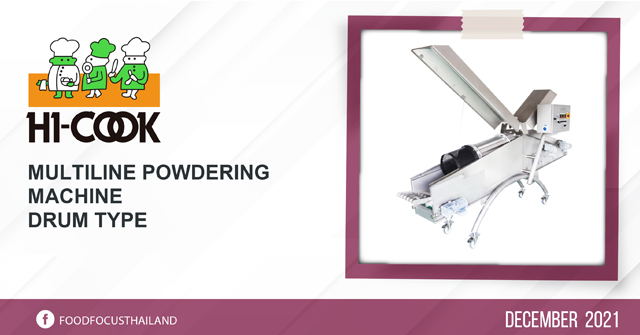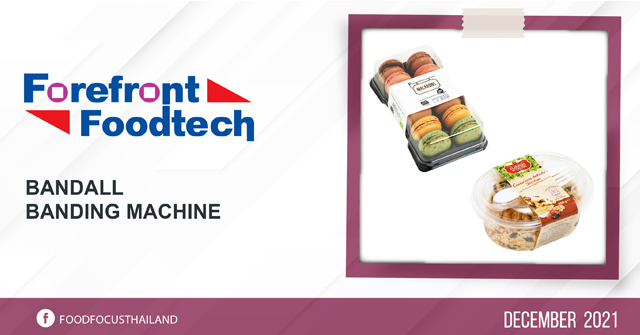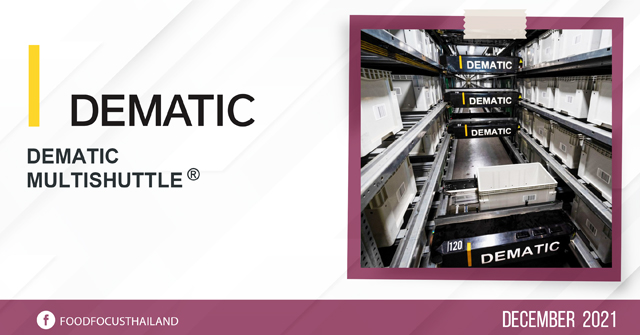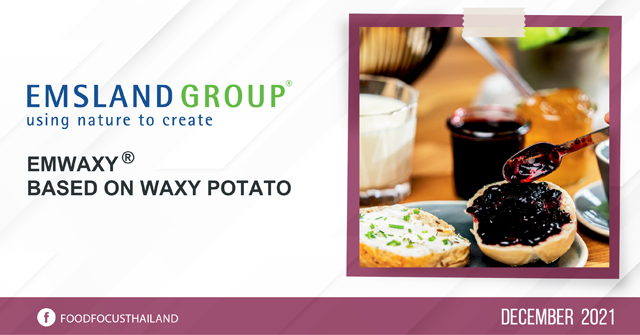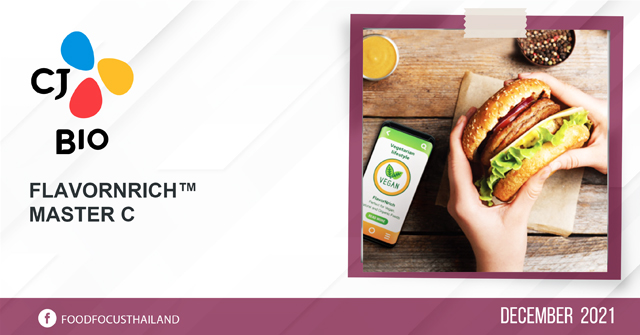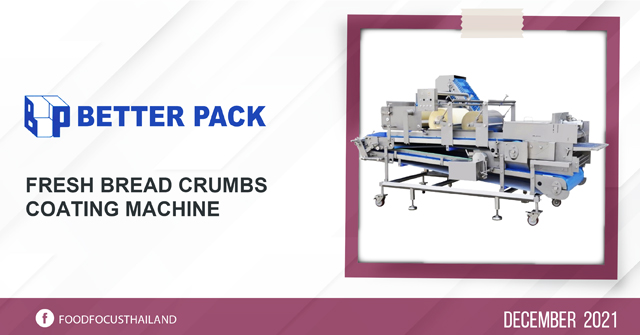Author: admin
Dual Pipe Plug Diverter PTD- II
Multiline Powdering Machine Drum type
Bandall Banding Machine
Dematic Multishuttle®
OctoFrost IQF Freezer
Emwaxy® based on Waxy potato
FlavorNrichTM Master C
Fresh Bread Crumbs Coating Machine
The trend of “Meat Alternative Ingredients.”
แนวโน้มของส่วนผสมอาหารสำหรับเนื้อสัตว์ทางเลือก
ตลาดเนื้อสัตว์ทางเลือกคาดว่าจะมีอัตราการเติบโตเฉลี่ยเพิ่มขึ้นจากร้อยละ 15.1 ในปี 2563 เป็น 17.5 พันล้านดอลลาร์สหรัฐฯในปี 2570 การเติบโตของตลาดนี้ส่วนใหญ่มาจากการเพิ่มขึ้นของการแพ้โปรตีนจากสัตว์ ประโยชน์ทางโภชนาการของเนื้อสัตว์ทางเลือก จำนวนประชากรที่บริโภควีแกนเพิ่มมากขึ้น และการลงทุนในอุตสาหกรรมเนื้อสัตว์ทางเลือก
โปรตีน เป็นหนึ่งในองค์ประกอบที่สำคัญที่สุดและสร้างความแตกต่างให้กับผลิตภัณฑ์ทางเนื้อสัตว์ทางเลือก โปรตีนมีความสำคัญต่อโครงสร้าง โดยสัมพันธ์กับการเติมน้ำและการละลาย, การทำให้เกิดอิมัลชันและการเกิดฟอง การยึดเกาะของกลิ่นรส ความหนืด การเกิดเจล เนื้อสัมผัส และการสร้างโด โปรตีนจากถั่วเหลืองเป็นโปรตีนที่ใช้กันทั่วไปในผลิตภัณฑ์เนื้อสัตว์ทางเลือก ในปัจจุบันโปรตีนถั่วจากถั่วลันเตาเป็นที่นิยมมากขึ้นเนื่องจากไม่มีสารก่อภูมิแพ้เหมือนถั่วเหลืองและข้าวสาลี
คาร์โบไฮเดรต สามารถแบ่งออกเป็นสตาร์ชและแป้ง ใช้เพื่อปรับปรุงเนื้อสัมผัสและความสม่ำเสมอของผลิตภัณฑ์ สารที่ช่วยในการยึดเกาะ เช่น เมทิลเซลลูโลส แซนแทนกัม คาราจีแนน
กลิ่นรส ถูกเติมลงในผลิตภัณฑ์เนื้อสัตว์ทางเลือกในรูปแบบของเครื่องปรุงรสและเครื่องเทศ การสร้างสรรค์กลิ่นรสที่ “คล้ายเนื้อสัตว์” ในเนื้อสัตว์ทางเลือกนั้นเป็นสิ่งสำคัญและเป็นที่นิยม
ผู้บริโภคมีความต้องการผลิตภัณฑ์เนื้อสัตว์ทางเลือกที่มีเนื้อสัมผัสและกลิ่นรสที่ได้มาตรฐานสูง บริษัทผู้ผลิตอาหารที่กำลังมองหาวิธีการปรับปรุงคุณภาพทางประสาทสัมผัสของผลิตภัณฑ์ที่ไม่มีเนื้อสัตว์ในปัจจุบัน CJ TasteNrich® และ FlavourNrichTM ผลิตภัณฑ์จากเทคโนโลยีการหมักขั้นสูง สามารถใช้เป็นส่วนผสมที่ให้กลิ่นรสเนื้อสัตว์ที่เป็นเอกลักษณ์เพื่อปรับปรุงคุณภาพทางประสาทสัมผัสของผลิตภัณฑ์เนื้อสัตว์ทางเลือกได้
ค้นหาข้อมูลเพิ่มเติมได้ที่ www.cjbio.net
The trend of “Meat Alternative Ingredients.”
The market for meat alternatives is expected to grow at a CAGR of 15.1% from 2020 to reach $17.5 billion by 2027. The growth of this market is mainly attributed to the increasing incidence of intolerance for animal protein, nutritional benefits offered by meat alternatives, increasing vegan population, and venture investments in the meat alternatives industry.
The protein ingredient is one of the most important components for product identity and product differentiation of meat alternative products. Proteins have important structure-function relationships in hydration and solubility, emulsification and foaming, flavor binding, viscosity, gelation, texturization and dough formation. Soy proteins are historically the most common proteins used in meat alternative products but are facing growing pressure from pea proteins. Pea is popular as it has no allergenic shortcomings like soy or wheat.
Carbohydrate ingredients can be categorized as the starches or flours used to improve product texture and consistency or the binding ingredients or gums, like methylcellulose, xanthan gum, carrageenan.
Specific flavor ingredients are added to meat alternative products in the form of seasoning and spices. Creating the “meat-like” flavor in meat alternatives is important and on-trend.
Consumers are demanding meat alternative products, satisfying that their texture and flavor meet high standard. Food companies are looking at ways to improve the functionality and sensory profile of the current meat-free products. CJ TasteNrich® and FlavorNrichTM, fermented products can be considered as key ingredients which unique meaty flavor to improve the sensory profile of meat alternative products.
Find out more information: www.cjbio.net

